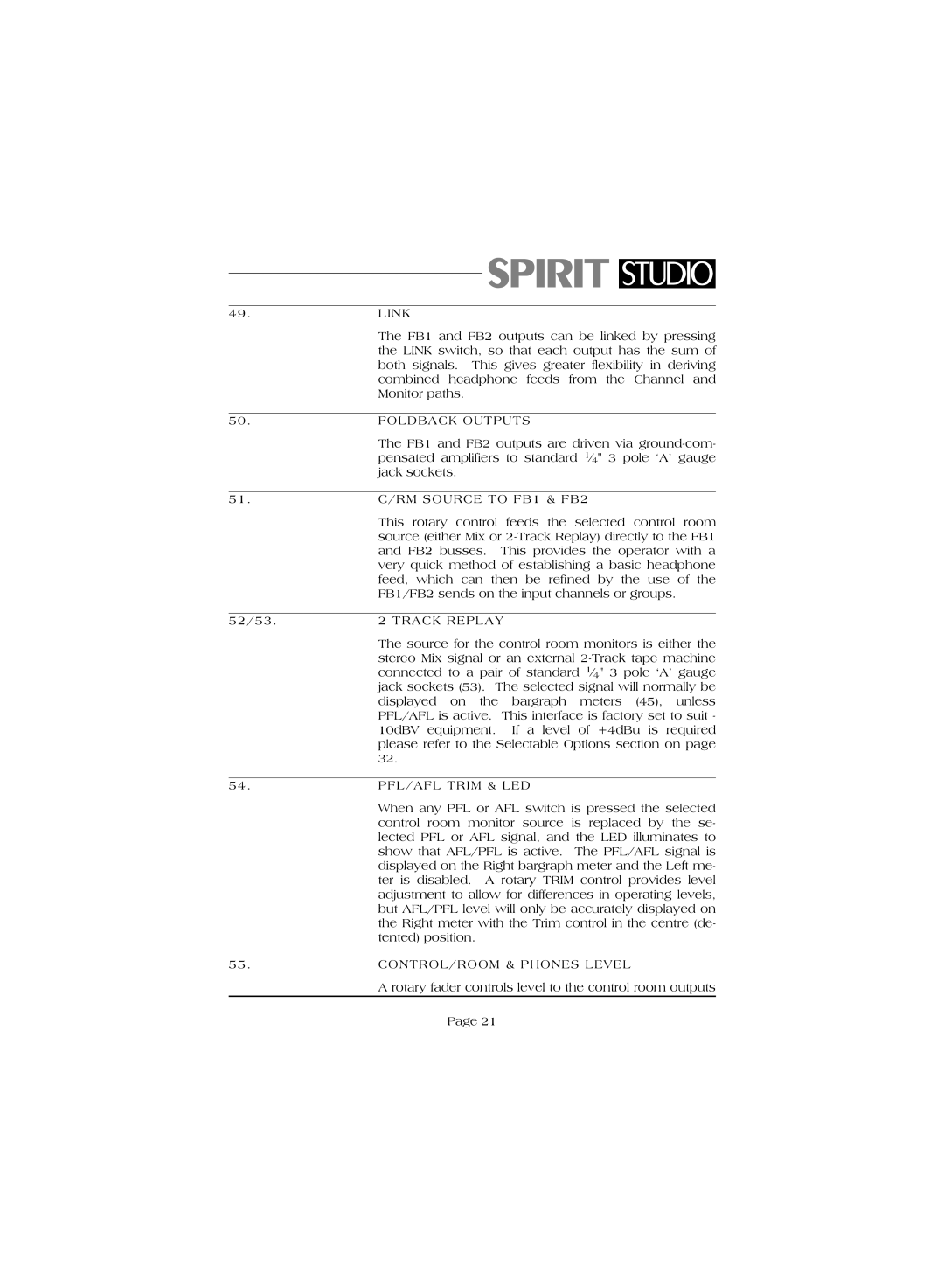
49. | LINK |
| The FB1 and FB2 outputs can be linked by pressing |
| the LINK switch, so that each output has the sum of |
| both signals. This gives greater flexibility in deriving |
| combined headphone feeds from the Channel and |
| Monitor paths. |
|
|
50. | FOLDBACK OUTPUTS |
| The FB1 and FB2 outputs are driven via |
| pensated amplifiers to standard 1⁄4" 3 pole ‘A’ gauge |
| jack sockets. |
|
|
51. | C/RM SOURCE TO FB1 & FB2 |
| This rotary control feeds the selected control room |
| source (either Mix or |
| and FB2 busses. This provides the operator with a |
| very quick method of establishing a basic headphone |
| feed, which can then be refined by the use of the |
| FB1/FB2 sends on the input channels or groups. |
|
|
52/53. | 2 TRACK REPLAY |
| The source for the control room monitors is either the |
| stereo Mix signal or an external |
| connected to a pair of standard 1⁄4" 3 pole ‘A’ gauge |
| jack sockets (53). The selected signal will normally be |
| displayed on the bargraph meters (45), unless |
| PFL/AFL is active. This interface is factory set to suit - |
| 10dBV equipment. If a level of +4dBu is required |
| please refer to the Selectable Options section on page |
| 32. |
|
|
54. | PFL/AFL TRIM & LED |
| When any PFL or AFL switch is pressed the selected |
| control room monitor source is replaced by the se- |
| lected PFL or AFL signal, and the LED illuminates to |
| show that AFL/PFL is active. The PFL/AFL signal is |
| displayed on the Right bargraph meter and the Left me- |
| ter is disabled. A rotary TRIM control provides level |
| adjustment to allow for differences in operating levels, |
| but AFL/PFL level will only be accurately displayed on |
| the Right meter with the Trim control in the centre (de- |
| tented) position. |
|
|
55. | CONTROL/ROOM & PHONES LEVEL |
| A rotary fader controls level to the control room outputs |
|
|
Page 21
